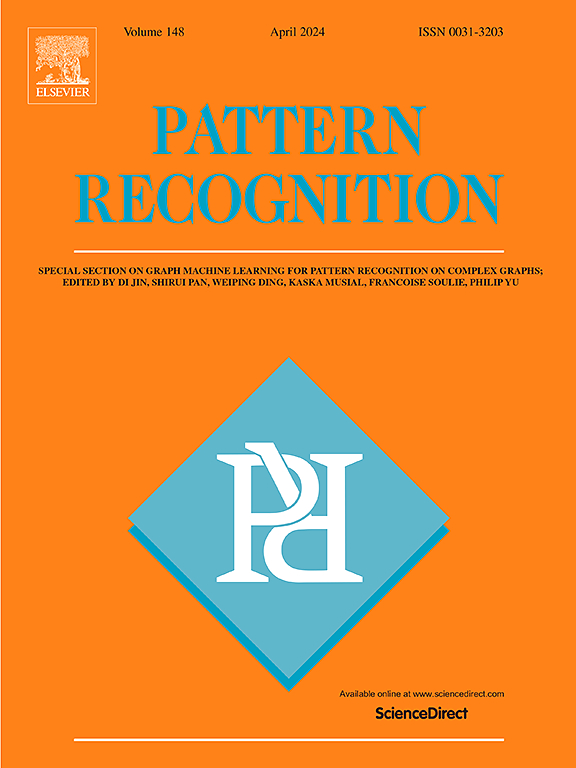Multi-modal hypergraph contrastive learning for medical image segmentation
IF 7.5
1区 计算机科学
Q1 COMPUTER SCIENCE, ARTIFICIAL INTELLIGENCE
引用次数: 0
Abstract
Self-supervised learning (SSL) has become a dominant approach in multi-modal medical image segmentation. However, existing methods, such as Seq SSL and Joint SSL, suffer from catastrophic forgetting and conflicts in representation learning across different modalities. To address these challenges, we propose a two-stage SSL framework, HyCon, for multi-modal medical image segmentation. It combines the advantages of Seq and Joint SSL using knowledge distillation to align similar topological samples across modalities. In the first stage, cross-modal features are learned through adversarial learning. Inspired by the Graph Foundation Models and further adapted to our task, the Hypergraph Contrastive Learning Network (HCLN) with a teacher-student architecture is subsequently introduced to capture high-order relationships across modalities by integrating hypergraphs with contrastive learning. The Topology Hybrid Distillation (THD) module distills topological information, contextual features, and relational knowledge into the student model. We evaluated HyCon on two organs, lung and brain. Our framework outperformed state-of-the-art SSL methods, achieving significant improvements in segmentation with limited labeled data. Both quantitative and qualitative experiments validate the effectiveness of the design of our framework. Code is available at: https://github.com/reeive/HyCon.
医学图像分割的多模态超图对比学习
自监督学习(SSL)已成为多模态医学图像分割的主流方法。然而,现有的方法,如Seq SSL和Joint SSL,在不同模式的表征学习中存在灾难性遗忘和冲突。为了解决这些挑战,我们提出了一个用于多模态医学图像分割的两阶段SSL框架HyCon。它结合了Seq和Joint SSL的优点,使用知识蒸馏来跨模式对齐相似的拓扑样本。在第一阶段,通过对抗性学习学习跨模态特征。受图基础模型的启发并进一步适应我们的任务,随后引入了具有师生架构的超图对比学习网络(HCLN),通过将超图与对比学习集成在一起来捕获跨模态的高阶关系。拓扑混合蒸馏(THD)模块将拓扑信息、上下文特征和关系知识提取到学生模型中。我们在肺和脑两个器官上评估了HyCon。我们的框架优于最先进的SSL方法,在有限标记数据的分割方面取得了重大改进。定量和定性实验验证了框架设计的有效性。代码可从https://github.com/reeive/HyCon获得。
本文章由计算机程序翻译,如有差异,请以英文原文为准。
求助全文
约1分钟内获得全文
求助全文
来源期刊

Pattern Recognition
工程技术-工程:电子与电气
CiteScore
14.40
自引率
16.20%
发文量
683
审稿时长
5.6 months
期刊介绍:
The field of Pattern Recognition is both mature and rapidly evolving, playing a crucial role in various related fields such as computer vision, image processing, text analysis, and neural networks. It closely intersects with machine learning and is being applied in emerging areas like biometrics, bioinformatics, multimedia data analysis, and data science. The journal Pattern Recognition, established half a century ago during the early days of computer science, has since grown significantly in scope and influence.
 求助内容:
求助内容: 应助结果提醒方式:
应助结果提醒方式:


